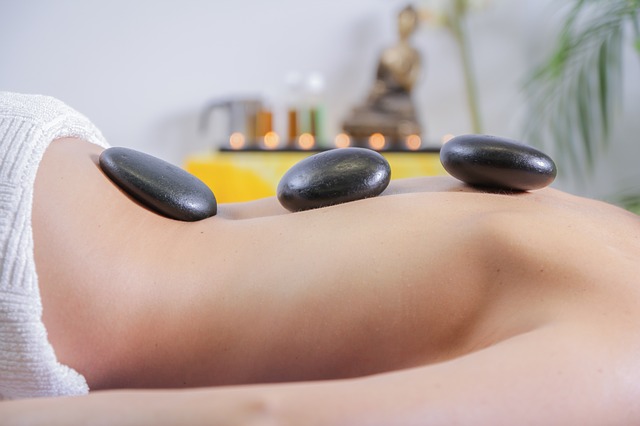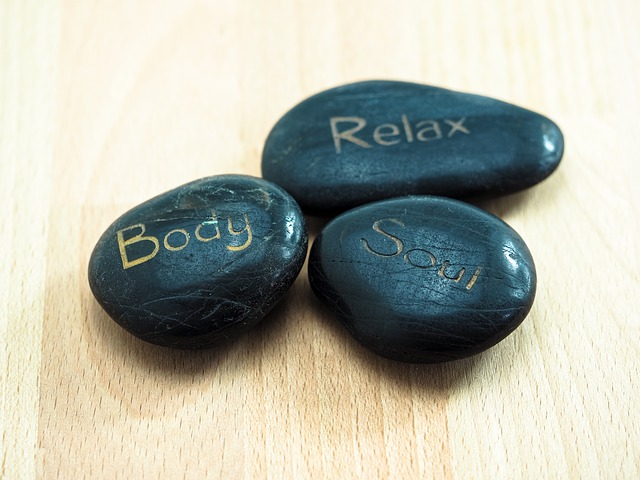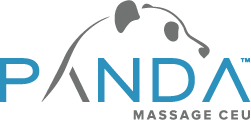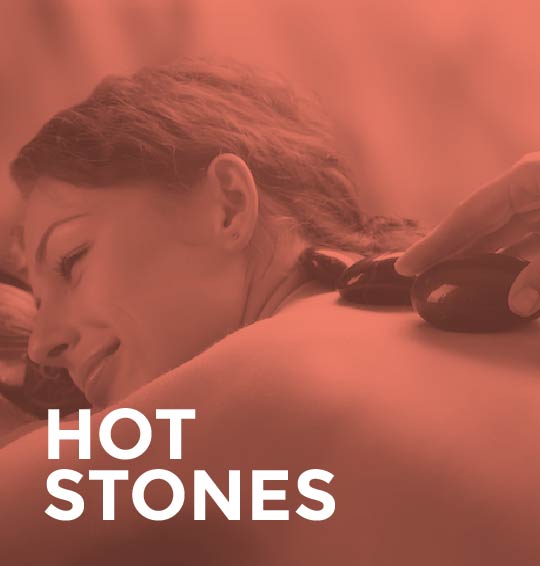Hot Stone Massage CEU Course – Outline and Learning Outcomes
As a licensed professional massage therapist, your job is to provide your clients with a therapeutic approach that relieves pain, calms the mind, and increases overall wellness. While enrolled in a course of study, you learned a wide range of techniques and therapeutic approaches to provide clients with the highest quality care possible. When a client comes into your office for a massage, you assess their current state, take an account of what they need and where they are in the moment, and then offer them the best service possible in order to lower their stress level, relax their musculature, and treat their body in the most holistic way possible.
As a practitioner, you’re sometimes faced with personal limitations. Perhaps you have a client with a persistent issue that refuses to self-correct. Or, maybe you’re putting too much personal energy (physical as well as spiritual) into your clients’ healing, and exhausting yourself on a fundamental level.
This latter possibility is a common complaint amongst massage therapists. Most people in this profession choose to take on this line of work out of a genuine and compassionate desire to heal. Massage therapists are selfless, dedicated individuals who take it upon themselves to heal those around them on a number of levels. This can become both intellectually and emotionally consuming after years of practice.
But just as importantly, it can become physically draining as well. The amount of sheer physical effort involved in order to perform effective deep tissue technique, for example, is far from inconsequential. Therapists who have been practicing for years begin to notice aches and pains of their own, and are oftentimes ironically forced into seeking out massage therapy for themselves to navigate these issues.
What if there were a form of massage therapy that could circumvent these myriad problems? A technique that could treat patients on an energetic level, supporting them in a grounding and fundamental way, while also providing deep, penetrating therapeutic results without the need for the practitioner to expend an intense amount of physical energy? This technique would be simple, aesthetically pleasing, effective, and appealing to clients.
This technique exists. And with our Hot Stone Massage CEU course, it’s readily available to practitioners like you.
This modality can enhance any form of massage therapy or other healing modality that you might currently employ in your daily practice. If you’ve been in search of hot stone massage training, look no further than this comprehensive online course from Panda Massage CEU™.
Learning Objectives for Our Chair Massage CEU Course

So, you’re ready to get started with this course. Why, you ask, should you take the time to read through a list of learning outcomes? There are a couple of important reasons.
First, by examining a list of this class’s learning objectives, you’ll understand what you can expect to gain from participating in this course. And, secondly–and perhaps even more importantly–you stand to gain as an adult learner. When taking on new information as an adult, there are both disadvantages to be overcome (maybe it’s been awhile since you’ve been in school) as well as advantages to be harnessed (you’re motivated, focused, and probably more interested in the content than the average college student). As a result of preparing you for what the course will cover, reading through the learning objectives will help to increase your level of retention throughout the course and aid in making your learning more effective and efficient.
In layman’s terms, our continuing education course will cover the history of the technique, its benefits, various contraindications, and an effective sequence of techniques for you to use in your massage practice.
That said, let’s go into more detail. After completing this course, you’ll be able to accomplish the following:
Relate the History of the Use of Stones in the Healing Process
Massage techniques are often steeped in their own unique history, and hot stone is no different. After taking this course, you’ll have a thorough understanding of the history of this technique in cultures across the world. This will give you knowledge to draw upon in your practice, and also help you in explaining the origins of the technique to curious clients.
Recognize the Modality’s Benefits
The benefits of certain massage techniques are sometimes fairly obvious: deep tissue works the deeper layers of muscle and fascia, for example. Hot stone’s benefits are numerous, though, and some of them are more obvious than others. After taking this course, you’ll have a thorough understanding of the array of benefits associated with the techniques covered, and be able to articulate these to your clients as well.
Identify Contraindications and Cautions
Every technique has contraindications. While hot stone massage can be incredibly effective and highly therapeutic, the sometimes-intense nature of this technique means that it’s contraindicated for certain conditions. In this course, you’ll learn about the various conditions for which this form of therapy is contraindicated.
Recognize the Physiological Reactions to Thermotherapy and Cryotherapy in Relation to Stone Therapy
Thermotherapy (heat therapy) and cryotherapy (cold therapy) are important massage techniques, and it’s possible to blend the two in working with hot stones. After taking this course, you’ll understand how to integrate these techniques.
Perform a Sequence of Techniques
Learning a new massage technique can sometimes be overwhelming. There are so many possibilities with the new approach: where do you start? As part of this course, you’ll learn a complete therapeutic sequence of techniques. After completing the course, you’ll be able to incorporate that sequence into your practice, and use it as a framework for developing your own approach and modality. Please note: before you do incorporate hot stones into your practice, be sure to check your states certification requirements in case further in-person training is needed.
Course Outline

Now that you’ve read through the learning objectives, you should have a good sense of what you’ll get out of our hot stone massage CEU course. But, you might still be wondering about how exactly the course is laid out. Which topics does it cover? What’s covered in detail?
Below, you’ll find an extensive description of the course from beginning to end. This overview will enable you to understand what’s contained in the course. With this understanding, you’ll be able to take note of any areas you’re less familiar with, and identify ahead of time which parts of the course might demand more study, focus, and time on your part.
History
One of the most exciting parts of studying a new massage modality is learning about its history. This is especially true with a technique like hot stone, which has a long and storied past in cultures all across the world. As part of this course, we’ll go into depth about the history of the modality all around the world, including:
Native Americans, Hawaii, and Modern America
We’ll look at Native American use of sweat lodges; the use of hot stones by Hawaiian medicine men; and modern approaches in the United States.
Europe
Use in western Europe goes back to the 5th century B.C. in ancient Greece. We’ll explore the interplay of this technique with the Romans in combination with cryotherapy.
Africa and India
African archaeological records hold interesting information about the use of this approach. When it comes to India, we’ll examine how the technique used as part of Ayurvedic medicine.
China
The Chinese have been using heated stones for centuries. We’ll take a look at how various forms of stone therapy have been incorporated into traditional Chinese medicine.
Brazil and the Middle East
Lastly, we’ll examine the use of the technique in the Middle East and Brazil.
Types of Stones
When we think of hot stone therapy, we imagine stones being heated and placed on a client for various therapeutic purposes. But, if you’re not yet familiar with the technique, you may not have given much thought to what types of stones are being used. In this course, we’ll look at the healing properties of various stones, including sedimentary, igneous, and metamorphic stones.
Properties of Stones: Size, Shape, Color
Believe it or not, the properties of various stones can be taken into account when preparing treatments for your client. Different properties can produce a variety of therapeutic effects, and some are more suited for certain conditions than others. Our course examines the size, shape, and color of stones, and the effect that these properties can have during treatment.
Energy Conductors
The physical interaction of the heat from the stones with the client’s muscle and fascia is just one aspect of hot stone therapy. In addition, the stones act as energy conductors. The ability of the stones to accomplish energetic healing is something that traditional cultures around the world have known for centuries. In this course, we’ll examine the energetic nature of this form of therapy, and how to harness it during a session.
Deep Relaxation
As a professional massage therapist, you’re already aware of the fact that many of your clients come to see you because they’re seeking deep relaxation. One of the greatest things about this modality is how effectively it relaxes clients. In this class, you’ll learn about the relaxing and calming effect that stones have in practice.
Deep Penetration
Deep tissue massage is an amazing treatment modality, and therapists use it for good reason: it can accomplish things that other techniques simply can’t. Hot stone is another technique capable of deep penetration, and it’s a great accompaniment to deep tissue massage. We’ll discuss how to weave the two together.
Saving Your Hands
One of the best things about this technique is the degree to which it can elongate a therapist’s career, and make their daily practice easier. How? By saving their hands. Certain forms of massage, especially trigger point therapy, can take a serious toll on your hands after years of practice. Hot stone massage is less demanding, and allows you to perform some of these techniques with less strain. We’ll show you how.
Pain Reduction
You’ve likely had this experience: a client comes in, and they’re in pain. They need deep muscle work, but because of the discomfort, they can’t tolerate deep tissue or a similar modality because it’s too uncomfortable. The techniques covered in this class can provide exceptional pain relief, without making the client uncomfortable the way that deep tissue and other techniques can. In this course, you’ll learn about how to effectively use hot stones for pain reduction.
Hydrotherapy
The techniques presented in this course can be incorporated into your practice alongside a lot of other techniques, including hydrotherapy.In fact, hydrotherapy is especially suited to integration with hot stone massage. We’ll discuss how to combine the two effectively.
Contraindications
Just as with any technique in the world of massage, there are certain scenarios where hot stone therapy can be contraindicated. It’s important to understand and be aware of these, so that you can be sure to only use this modality when it’s appropriate. We’ll discuss all of the various contraindications for its use, including high blood pressure; low heat tolerance; multiple sclerosis; diabetes; cancer; autoimmune dysfunction; epilepsy; neuropathy; and pregnancy.
Safety Precautions
While these techniques offer an incredible range of benefits to clients, there are some important safety precautions unique to this technique that should be adhered to. In this course, we’ll discuss all of the safety precautions associated with this form of massage.
Informed Consent
Hot stones can be an intense form of therapy, and it’s important to ensure that you’ve received explicit permission from the patient to use them. We’ll discuss how to incorporate a consent form into your practice.
Endangerment Sites
As with other forms of massage, hot stone therapy has certain “endangerment sites” associated with it. Endangerment sites are areas of the body where arteries, veins, nerves, and other structures are located close to the skin surface. In this course, we’ll examine the various endangerment sites associated with hot stone therapy, including the kidneys and heart; the “no muscle, no stone” rule; the anterior neck; the clavicles and A/C joints; the spinous processes; the malleolus; and small bones.
Supplies
Specific supplies are essential to conducting hot stone therapy. We’ll discuss what you need to get started.
Sanitation
While you may already have a sanitation routine associated with your practice, hot stones present a unique scenario when it comes to maintaining sanitary conditions across clients. In this course, we’ll look at how to keep your stones sanitized between clients.
Room and Table Setup
Setting up your room and table for hot stone therapy brings with it some specific requirements that differ from standard practice. We’ll discuss exactly what you need to do to set yourself up for success.
Techniques
Now that you have an in-depth understanding of hot stone massage, you’re ready to learn a specific technique series. To wrap up the course, we’ll go into great detail with a complete, comprehensive protocol that you can use right away with your patients. The protocol involves both supine and prone positions, and covers all major muscle groups and parts of the body.
What are CEUs, and Why are They Important?
Your continuing education as a massage professional involves two important components. On the one hand, your daily experience in the clinic provides you with a practical education that’s an absolute necessity to your professional growth. At the same time, however, it’s equally essential to continue your education in a more traditional way. If you’re wondering how you can do that, we’re here to help. Massage CEUs, or Continuing Education Units (GUIDE TO LMT CONTINUING EDUCATION), are an excellent way to keep learning long after you’ve graduated from a massage program.
And while massage CEUs are a huge part of professional development, they’re also often a legal requirement. In most states, all licensed practitioners are required to take a certain number of CEU hours (NCBTMB GUIDE) each year (or sometimes every two to three years) in order to keep their license current.
As an NCBTMB Approved Provider of CEUs, Panda Massage CEU can provide you with quality education that fulfills state and national requirements.
Why Choose Panda Massage CEU?
There may be other online providers of massage CEU courses, but we’re confident that Panda Massage CEU is the best choice for your continuing education needs:
Quality
Other courses are of questionable quality. Meanwhile, we’re proud to offer some of the best massage CEU courses in the country, and stand by our quality 100%.
Unique Topics
We offer required courses like medical errors, which many states mandate that you take. But we also have exciting courses with unique topics such as deep tissue, hydrotherapy, and more.
Professional Narration
Some online courses are poorly made, with low quality audio. Our courses are professionally narrated, and of the highest caliber.
Video Included
A lot of other courses out there don’t include a video component. At Panda Massage CEU, all of our courses come with an extensive video, which helps to better replicate an in-person learning experience.
Self-Paced
Sometimes, your busy schedule can interfere with your ability to obtain CEUs. We understand this, and that’s why all of our courses are self-paced. No matter how hectic your schedule gets, you’ll be able to keep up with the material.
Great Prices
Our courses aren’t just high quality: they’re also an amazing value. Our affordable prices mean that our CEU courses work with any budget. And remember: online courses can save you thousands of dollars that you’d spend on travel while attending an in-person course.


There are no reviews yet.